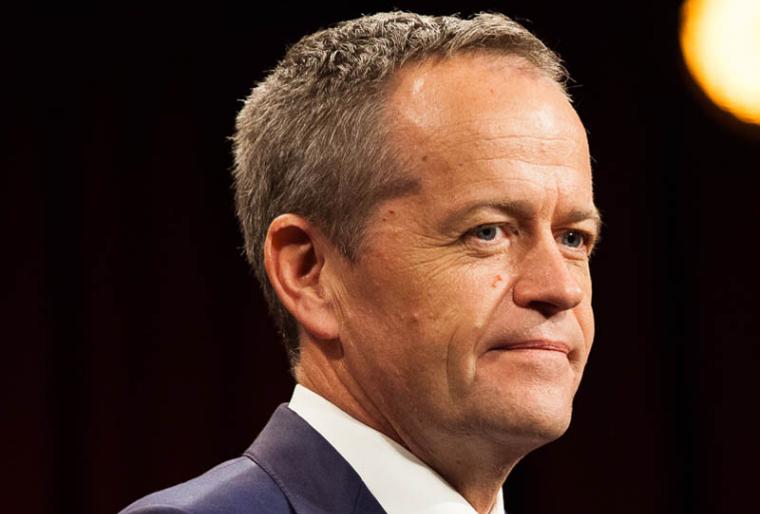Labor has unveiled “Australia’s first” national electric vehicles policy package, just days after the federal government confirmed its own strategy won’t be released for another year.
The policies include a national electric vehicles target of 50 percent of all new car sales by 2030, a government fleet target of 50 percent by 2025 and tax deductions for businesses purchasing electric vehicles (EVs).
The package, part of a broader climate change announcement, was revealed by Opposition Leader Bill Shorten on Monday morning, on the eve of the federal budget.

“Cleaner cars and transport aren’t just good for the environment – they are cheaper to run. But Australia lags behind our competitor countries, whether it’s on electric vehicle take-up, or vehicle fuel efficiency. We have 10 times lower electric vehicle take-up than the global average, and we’re at risk of being left behind,” Mr Shorten said.
The National Electric Vehicle policy will “build the local industry, generate more local jobs and help consumers make the switch”, he said.
The flagship new policy is a target of 50 percent of all new car sales to be electric vehicles by 2030.
“The global transition to electric vehicles is well underway, but the Liberals’ failure to deliver credible climate change and electric vehicle policies means Australia is now last among western countries for electric vehicle uptake,” Mr Shorten said.
“Incredibly, New Zealand has more electric vehicles than Australia. Setting a national target will deliver more affordable electric vehicles into the Australian market and drive the switch to electric vehicles, reducing their cost, creating thousands of jobs and cutting pollution.”
Under the plan, the government would also “send a strong signal to the global industry” by setting a target of 50 percent of new government purchases and leases to be electric by 2025, creating a second-hand market in the process.
Businesses purchasing an electric vehicle valued at more than $20,000 would also receive an immediate 20 percent depreciation deduction under the plan.
Labor would also work with state and territory governments in establishing a COAG agenda to improve the coordination of electric vehicle uptake and infrastructure planning. The Opposition would require all federally-funded road upgrades to incorporate charging infrastructure, work with states to ensure new and refurbished commercial and residential developments include charging capacity, and promote national standards for electric vehicle charging infrastructure.
While not setting a timeline or exact target, the government also flagged its intention to introduce vehicle emissions standards to “ensure consumers are made significantly better off”.
An electric vehicle innovation and manufacturing strategy would also be rolled out by Labor to “work with industry to create new job opportunities with the transition”.
“There are a number of barriers to EV take-up in Australia, including costs relative to combustion engine cars, lack of access to charging stations, limited model availability and the lack of a second hand market. These barriers are compounded by the lack of a national policy for EVs, which has sent the wrong signal to consumers and car makers,” Mr Shorten said.
“A lack of EV policy means that Australia captures very little of the industry and jobs created by value chain opportunities associated with a robust EV market, in mineral mining, to processing, design and EV component manufacture.”
The Labor policy package comes just a week after the federal government confirmed that its own promised electric vehicles strategy won’t be unveiled until mid-2020. The strategy was announced by the Coalition earlier this year as part of its own climate change package, but consultations and planning for it haven’t yet begun.
Labor’s announcement has been largely welcomed by the Australian EV sector.
Schneider Electric VP of partner projects and power solutions Farokh Ghadially said the set of policies needs to be a priority for the next Australian government.
“National action on electric vehicle policy is long overdue and its absence has been a missing link for greater EV adoption and infrastructure preparation in Australia. This is what our nation needs to deliver better transport options, cleaner cities and a more sustainable future,” Mr Ghadially told InnovationAus.com.
“The reality is that we have the technology to make it happen, we’re also seeing new cars entering the market and more variations in price points. The last piece of the puzzle is government planning and involvement. If we want to seize the opportunities that EV can create for our country and get a head start on decarbonising our future, Australia needs to fast-track the electrification of transport.”
Environment minister Melissa Price has confirmed that the strategy won’t be seen for more than a year, if the government wins the upcoming May election.
The government’s strategy will “ensure a planned and managed transition to new vehicle technology and infrastructure so all Australians can reap the benefit”.
It comes after a senate committee report produced a number of “weak and shallow” recommendations that were watered down by Coalition and Labor senators.
Despite now unveiling its own policy package, Labor senators on the committee at the time said it is a task for government to produce a strategy.
“Although the committee advises on these issues in the report, it was not in a position to develop the comprehensive national strategy that is required That is a task for the national government, engaging with industry and the wider community. This engagement will be fundamental to achieving a just and effective transition to new forms of automotive and other transport propulsion,” the Labor senators said in February.
“This report recommends that the Commonwealth government take the lead in developing a strategy for the introduction of electric vehicles. It urges the government to do what is currently not being done.”
Do you know more? Contact James Riley via Email.

